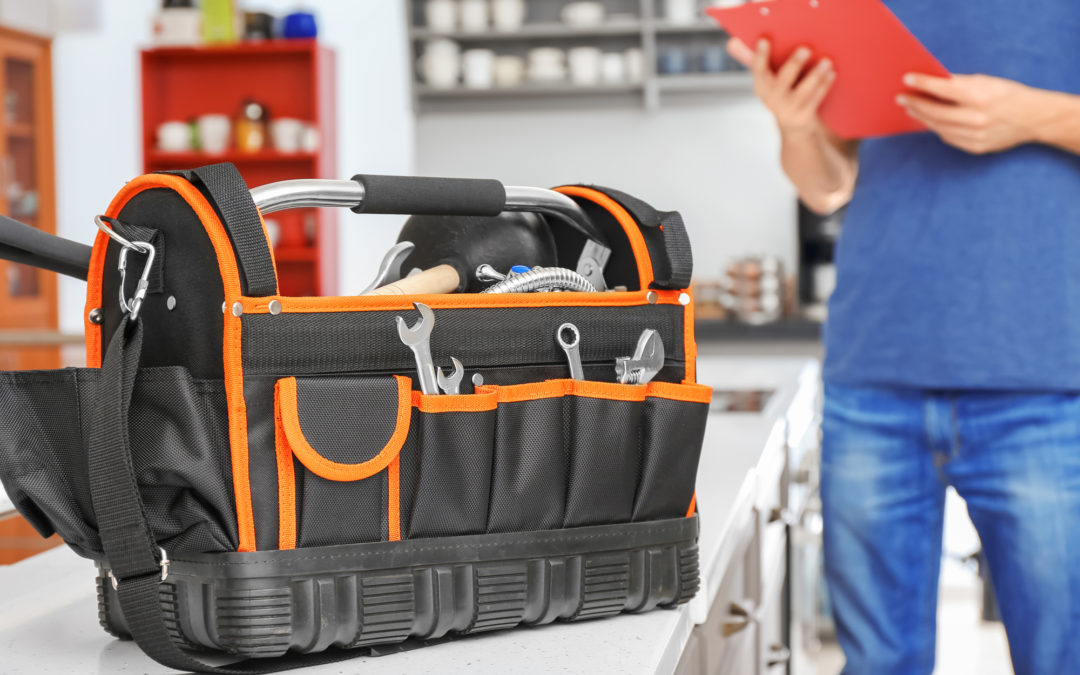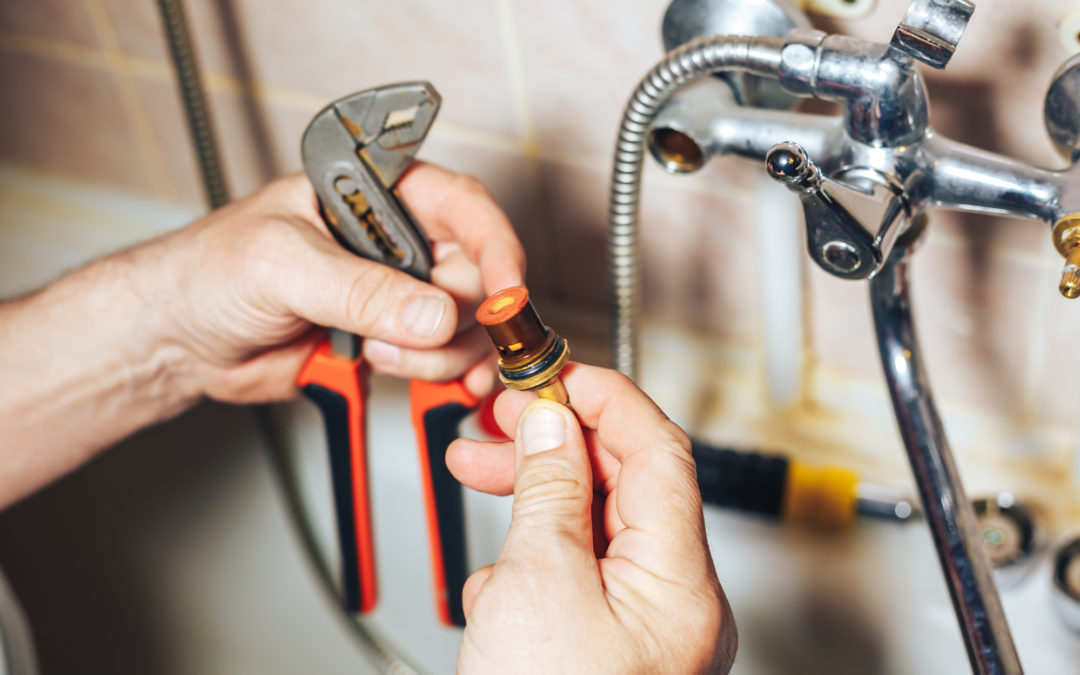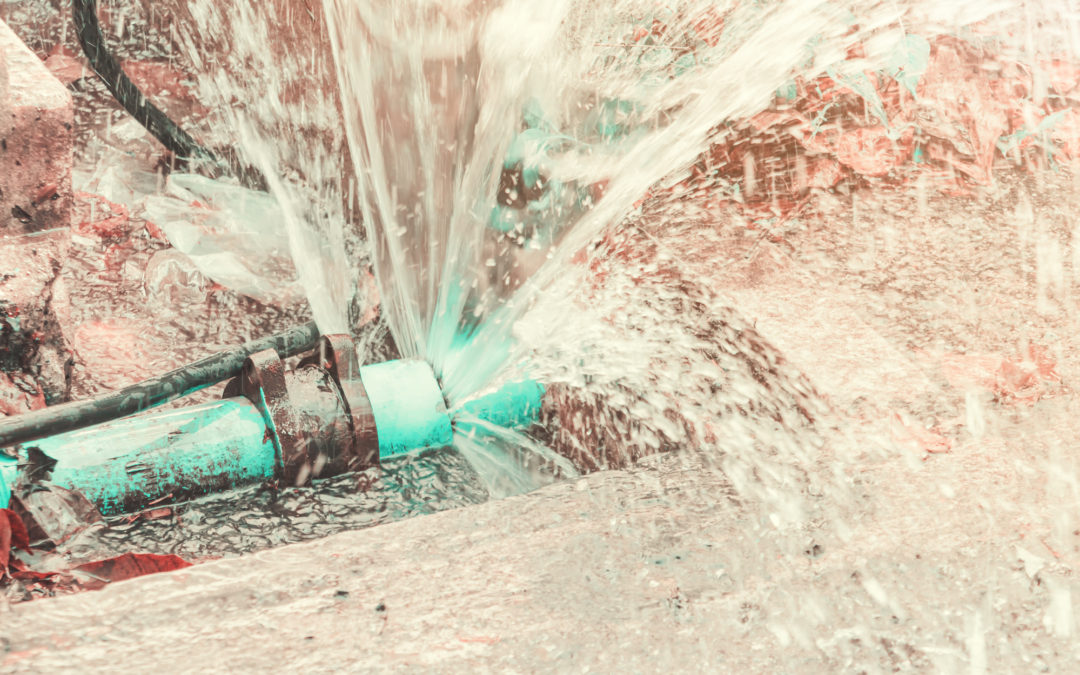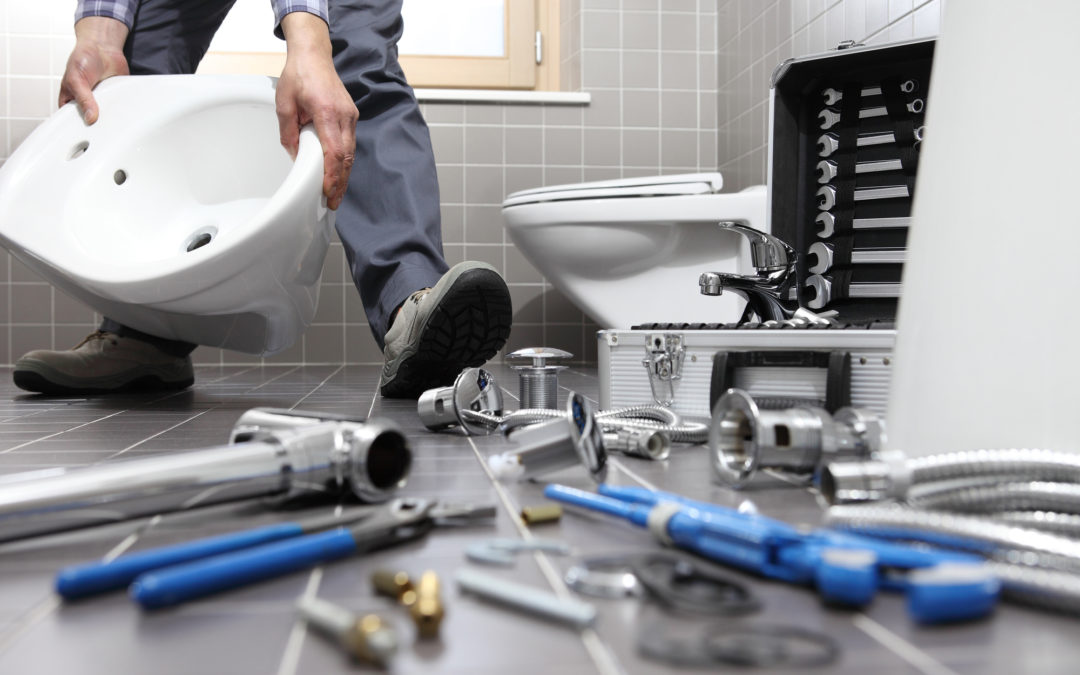
by Brandon | Jul 19, 2023 | News
The Oatey Women’s Resource Network is proud to sponsor Plumbing Day at Let’s Build Construction Camp for Girls. The event takes place on June 12th and is designed to encourage young women to explore careers in construction and plumbing. It is a fantastic opportunity for girls to learn more about the industry, gain hands-on experience, and meet professionals in the field.
The Need for Female Plumbers in the Industry
Women only account for a small percentage of the plumbing industry, and many organizations are working to change that. The Oatey Women’s Resource Network is one such organization, and we believe that it is important to encourage girls to consider plumbing as a viable career option.
According to a 2021 study by the Bureau of Labor Statistics, only 2.5% of plumbing, pipefitting, and steamfitting professionals are women. This is an alarming statistic, considering that the industry is expected to grow by 14% from 2020 to 2030. There is a clear need for more women to enter the plumbing field, and events like Plumbing Day at Let’s Build Construction Camp for Girls are a great way to encourage girls to pursue this as a career option.
The Benefits of a Plumbing Career
Plumbing is an essential part of modern society, and there is always a demand for skilled plumbers. The industry is also very diverse, with a wide range of career opportunities available. From working in residential homes to large commercial projects, plumbing professionals have the opportunity to work in a variety of settings.
In addition to job security and diversity, plumbing also offers competitive salaries and the opportunity for career advancement. It is a physically demanding job, but it is also rewarding, as plumbers have the satisfaction of solving problems and helping people.
Why Girls Should Consider a Career in Plumbing
Many girls may not have considered plumbing as a career option, as it is traditionally considered a male-dominated field. However, there are many reasons why girls should consider a career in plumbing.
Firstly, there is a clear need for more women in the industry. By becoming plumbers, girls can contribute to closing the gender gap within plumbing and construction. Additionally, girls who pursue a career in plumbing can enjoy job security, competitive salaries, and opportunities for career growth.
Plumbing can also be a great fit for girls who enjoy problem-solving and hands-on work. As the industry evolves, there is also an increasing focus on sustainability and green plumbing practices. This provides an opportunity for girls to make a tangible difference in the world through their work.
At Plumbing Day, girls can learn more about the benefits of a plumbing career and gain hands-on experience working with professionals in the field. They will also develop valuable skills that can be applied to any career path, such as teamwork, communication, and problem-solving.
Conclusion
The Oatey Women’s Resource Network is proud to be sponsoring Plumbing Day at Let’s Build Construction Camp for Girls. We believe that events like this are crucial in encouraging young women to explore career options in plumbing and construction. By increasing representation and diversity within these industries, we can create a better future for everyone.
If you are interested in pursuing a career in plumbing, we encourage you to explore your options and reach out to professionals in the field. Plumbing is a challenging, rewarding, and essential profession, and we believe that more women should consider it as a viable career choice. For more information, visit our website at aceplumbingrepair.com or give us a call at (844) 711-1590.

by Brandon | Jul 19, 2023 | News
Heat pumps have been gaining popularity as an alternative to traditional heating methods. They are cost-effective, energy-efficient, and environmentally friendly, making them a popular choice for homeowners. However, like any other heating system, proper installation is key to achieving maximum efficiency and performance.
Here are ten best practices for installing heat pumps that every plumber should know.
1. Proper Sizing
Installing the right-sized heat pump is crucial to ensure optimum performance. A unit that is too small will fail to meet the heating demands of the house, while one that is oversized will waste energy and money.
2. Site Selection
The location of the heat pump is also important. It should be installed in a location that is free from obstructions and noise. The outdoor unit should also be installed in a level area and protected from direct sunlight.
3. Ductwork
Proper ductwork installation is critical to the efficiency of the heat pump system. The ducts should be properly sealed, insulated, and installed in a way that minimizes air resistance.
4. Airflow
Proper airflow is essential for heat pump performance. The system needs to have the correct level of airflow to ensure optimum heat transfer. Airflow should be checked during installation and routinely thereafter.
5. Refrigeration Lines
The refrigeration lines must be properly sized, insulated, and installed. The connections should be sealed, and the unit should be pressure tested to ensure there are no leaks.
6. Thermostat
The thermostat plays a significant role in the heat pump system, and it is important to ensure that it is installed correctly. The thermostat should be located away from external heat sources, such as windows, and installed on an interior wall. It should also be set to operate within the manufacturer’s recommended temperature range.
7. Electrical Connections
Electrical connections should be properly sized and installed in a way that meets relevant codes and regulations. The contractor needs to ensure that the electrical supply can deliver the required voltage to the unit.
8. Defrost Cycle
Heat pumps can sometimes experience frost buildup, which can reduce efficiency. The defrost cycle is responsible for removing the frost. It is important to ensure that the heat pump system is configured to minimize the need for frequent defrost cycles, which can waste energy.
9. Regular Maintenance
Like any other HVAC system, heat pumps require regular maintenance to ensure optimum performance. The contractor should provide the homeowner with guidelines on when and how to maintain the system for optimal efficiency.
10. Professional Installation
Perhaps the most important best practice is to ensure that the heat pump system is professionally installed. This means choosing a licensed, experienced contractor who can guarantee a high-quality installation job. A professional installation will reduce the risk of problems such as leaks, poor performance, and energy inefficiency.
Conclusion
In conclusion, heat pumps offer many benefits to homeowners. They are energy-efficient, cost-effective and environmentally friendly. However, for maximum efficiency, professional installation is essential. The ten best practices highlighted in this article are key to ensuring that the heat pump system is installed correctly and maintained for optimal performance. So, if you are thinking of installing a heat pump for your home, make sure to choose a licensed and experienced contractor who can guarantee a high-quality installation job. Don’t forget to contact Ace Plumbing at (844) 711-1590 for all of your plumbing needs or visit their website at aceplumbingrepair.com.

by Brandon | Jul 19, 2023 | News
In an exciting win for boathouse owners in Helford Passage, a Vaillant competition recently awarded them a brand new water heater to upgrade their current system. This prize is a testament to the importance of having a reliable and efficient water heater system for boathouse owners and their guests.
When it comes to water heaters, many people may not realize that they come in a variety of types and sizes, each with their own benefits and drawbacks. Boathouse owners, in particular, have some unique factors to consider when deciding on a water heater system.
Firstly, the size and layout of a boathouse can make it challenging to find a space to install a water heater system. This means that compact and space-saving options may be necessary. Secondly, a water heater system for a boathouse must be able to meet the needs of frequent guests without taking up too much energy or space, as boathouses are often used as vacation rentals.
One option for boathouse owners is a tankless water heater system, which is compact and can be installed in tight spaces. Additionally, tankless water heaters only heat water on demand, which can save energy and money over time. This also means that there is an endless supply of hot water, making them an ideal option for boathouses used as vacation rentals.
Another option is a hybrid water heater system, which combines a traditional tank system with a heat pump. This technology can be especially useful for boathouses in cooler climates, where heat pumps may not be as effective. Hybrid systems offer the energy efficiency of a heat pump with the reliable supply of hot water from a tank system.
Boathouse owners should also consider the type of fuel that will be used to power their water heater system. Natural gas is often the most cost-effective option, but propane and electric systems are also available. It’s important to identify the fuel source available in the area and factor in any additional installation costs or safety considerations.
Maintaining a water heater system is also crucial for boathouse owners. Regular inspections and routine maintenance can help identify any issues before they become major problems. This can save money on repairs and prevent any disruptions to guests’ stays.
As seen in the recent Vaillant competition, having a reliable and efficient water heater system is important for boathouse owners. By selecting a system that fits their unique needs and taking the necessary steps for maintenance, boathouse owners can ensure a comfortable stay for themselves and their guests. If you’re a boathouse owner in need of a new water heater system, contact an experienced plumber today to discuss your options and ensure you have a reliable and efficient system that meets your needs.

by Brandon | Jul 19, 2023 | News
As we enter the new year, the plumbing industry has begun to witness a shift towards sustainable solutions in order to reduce carbon emissions and protect the environment. One of the game-changing innovations leading the way is the H2Powerplant, presented by Wilo – a pioneering plumbing technology company. The H2Powerplant technology represents the future of sustainable plumbing, combining green energy and water supply technologies to meet the needs of urban populations while minimizing the impact on the environment. In this article, we will explore the Wilo H2Powerplant and its potential benefits towards sustainable plumbing technology.
What is the H2Powerplant?
The H2Powerplant is an innovative technology that focuses on harnessing renewable energy sources to provide sustainable water supply. The system works by converting electricity produced by solar or wind power into hydrogen, which is then stored in tanks and later used to power fuel cells. These fuel cells provide the power required to pump and treat water, making the process completely sustainable and environment-friendly. In addition, the H2Powerplant is equipped with an Internet of Things (IoT) platform that enables the remote monitoring and control of the system’s functions, making it an eco-friendly, convenient, and smart solution to the growing demands for water supply across the globe.
How does H2Powerplant work?
The H2Powerplant technology is made up of a series of components that work together to produce sustainable water supply. First, solar or wind power is harnessed and converted into electricity using photovoltaic cells or wind turbines. The electricity is then used to electrolyze water to produce hydrogen using an electrolyzer. The hydrogen is used to power fuel cells that provide electric power to pumps and other equipment that treat and distribute water. Any excess energy produced by the system can be stored in batteries or fed back into the grid.
What are the benefits of the H2Powerplant for sustainable plumbing?
The H2Powerplant offers numerous benefits towards the implementation of sustainable plumbing technology. Firstly, the system is 100% sustainable, as it relies on green energy sources to produce electricity and hydrogen. This reduces the carbon footprint of plumbing systems, thus minimizing the impact on the environment. Secondly, the H2Powerplant is a cost-effective plumbing solution in the long run as it reduces the dependence of dependence on fossil fuels and energy costs, which is especially beneficial in areas with high power costs.
Another key benefit of the H2Powerplant’s technology is its scalability, which makes it suitable even for large-scale plumbing projects. For instance, this innovative technology can be used effectively in large urban centers or even in disaster-struck areas where access to water and power can be challenging. Additionally, the technology can be integrated into existing plumbing infrastructure without the need for a complete overhaul. Furthermore, the H2Powerplant technology helps with achieving regulatory compliance on water usage, making it a sustainable, economical, and legally compliant solution for the plumbing industry.
Conclusion
The Wilo H2Powerplant represents a revolution in sustainable plumbing technology. This innovative system mitigates the environmental impact of plumbing systems, reduces the dependence on fossil fuels, generates cost savings, and is easily scalable for large-scale implementation. As the world becomes more aware of the need for reducing carbon emissions, the plumbing industry is beginning to adopt sustainable solutions such as the H2Powerplant. At Ace Plumbing Repair, we pride ourselves on implementing the latest technology to provide our clients with the best solutions possible. We highly recommend H2Powerplant technology to anyone seeking sustainable and cost-effective plumbing solutions. Visit aceplumbingrepair.com or call us at (844) 711-1590 to learn more about our services.

by Brandon | Jul 18, 2023 | News
A noisy toilet can disrupt your peace of mind, especially when it’s not in use. The constant sound of water running or hissing can be annoying and may even lead to higher water bills. If you’re wondering why your toilet makes noise when not in use, there are a few possible reasons. Here are some of the most common causes of a noisy toilet and what you can do to fix the problem.
Problem: A Faulty Fill Valve
One of the most common culprits for a noisy toilet is a faulty fill valve. The fill valve is responsible for refilling the tank with water after you flush. If it’s not working correctly, it may cause a hissing or running water sound. The sound can be even louder if the water level is low or there’s a lot of air in the pipes.
Solution: Replacing the Fill Valve
Replacing the fill valve is typically a relatively straightforward task, even for those without professional plumbing experience. You can find fill valves at most home improvement stores. Depending on the make and model of your toilet, you may be able to replace the fill valve yourself in a few simple steps.
Problem: A Leaky Flapper
Another common cause of a noisy toilet is a leaky flapper. A flapper is a rubber valve that opens and closes to allow water to flow from the tank into the bowl when you flush. If the flapper is leaking, it can cause the toilet to run continually, even when it’s not in use. As water continues to leak through the flapper, it may also cause the water level in the tank to drop, leading to additional noise.
Solution: Replacing the Flapper
Replacing the flapper is another relatively straightforward task that you can typically do on your own. You can find replacement flappers at most home improvement stores. Before you replace the flapper, make sure you turn off the water supply to your toilet. Then, remove the old flapper and replace it with a new one.
Problem: A Problem with the Ballcock
The ballcock is a device that controls the water level in the toilet tank. It works by regulating the water flow into the tank to ensure that it’s at the correct level. If the ballcock isn’t functioning correctly, it can cause the water level in the tank to be too high or too low, leading to noise and potential water waste.
Solution: Replacing the Ballcock
Replacing the ballcock is a bit more complicated than replacing the fill valve or flapper. Ballcocks can be found at most home improvement stores, but you may need to hire a professional plumber to install it for you.
Problem: High Water Pressure
If the water pressure in your home is too high, it can cause your toilet to be noisy. The high pressure can cause water to flow back into the tank or bowl, leading to hissing or running sounds.
Solution: Installing a Pressure-Reducing Valve
If your home has high water pressure, you may need to install a pressure-reducing valve. This device will work to reduce the water pressure throughout your home, which can help eliminate the noise in your toilet.
Conclusion
A noisy toilet can be a real annoyance, but it’s not necessarily a cause for alarm. By understanding the most common causes of toilet noise and how to fix them, you can restore peace and quiet to your bathroom. If you’re not comfortable making these repairs yourself, consider calling in a professional plumber to help you diagnose and solve the problem. Remember, a quiet toilet is a happy toilet! And don’t forget to visit aceplumbingrepair.com or call (844) 711-1590 for all your plumbing needs.





